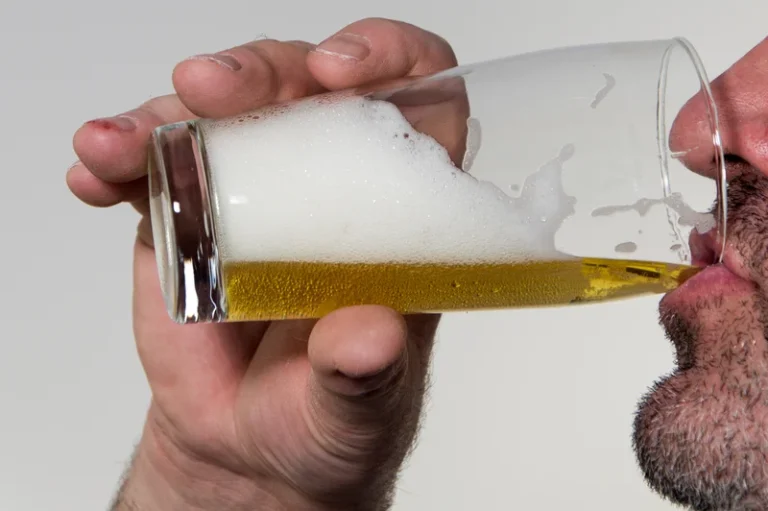
This article traces the origin of various charts and tables delineating the stages of alcohol influence in relation to the clinical signs and symptoms of drunkenness and a person’s blood-alcohol concentration (BAC). In forensic science and legal medicine, the most widely used such table was created by Professor Kurt M. Dubowski (University of Oklahoma). The first version of the Dubowski alcohol table was published in 1957, and minor modifications appeared in various articles and book chapters until the final version was published in 2012. Seven stages of alcohol influence were identified including subclinical (sobriety), euphoria, excitement, confusion, stupor, alcoholic coma and death. The BAC causing death was initially reported as 0.45+ g%, although the latest version cited a mean and median BAC of 0.36 g% with a 90% range from 0.21 g% to 0.50 g%. An important feature of the Dubowski alcohol table was the overlapping ranges of BAC for each of the stages of alcohol influence.

Current evidence and clinical utility of phenobarbital for alcohol withdrawal syndrome
Alcohol-induced activation of specific serotonin-receptor subtypes can stimulate dopaminergic activity in the nucleus accumbens, potentially contributing to alcohol’s rewarding effects. Other serotonin receptors have potential roles in tolerance,2 withdrawal,3 and intoxication (Valenzuela 1997). Opioid peptides are a class of neurotransmitters that produce physiological effects similar to those of morphine and heroin. In humans, opioid peptides interact with other neurotransmitters to influence a broad range of physiological functions, including the control of pain. High blood levels of certain opioid peptides have been correlated with feelings of euphoria. Alcohol consumption affects the activity of opioid peptides, which in turn appears to increase the rewarding effects of alcohol (Roberts et al. 2000).
- Nonetheless, alcohol should not be recommended for this purpose, especially when there are several safer, more effective approaches to reduce cardiovascular risk.
- Consistent with prior findings, a recent study by us showed that acute alcohol intoxication reduced brain activity in the cortical and subcortical regions including the temporal lobe consisting the hippocampus.
- Therefore it is plausible that eCIRP released from microglia present in the hippocampus acts directly on the pyramidal neurons and decreases LTP of the CA1 hippocampal region.
- Information is transferred by chemical messengers called neurotransmitters, which are released by one neuron and then bound by specialized proteins called receptors embedded in the outer membrane of another neuron.
- Hippocampal glutamate levels are also decreased with acute alcohol concentration that produces cognitive deficits (Shimizu et al., 1998).
- In addition, stage 1 sleep involves a marked decrease in both overall muscle tension and core body temperature.
The magnitude of acute and chronic alcohol abuse in trauma patients
- Binge alcohol drinking or acute alcohol intoxication is a risk factor for developing alcohol use disorder (AUD).
- Chronic alcohol dependence can cause central nervous system, gastrointestinal system, hematological, metabolic, and musculoskeletal disorders.
- Rapid drinking on an empty stomach (bolus dose) leads to a faster absorption of ethanol into the bloodstream, a higher peak blood-alcohol concentration (BAC) and more pronounced effects on a person’s performance and behavior (7).
- These synthetic drugs are so potent that even small doses can cause overdose and death.
Moderate ethanol exposure (1.25 g/kg) has shown to impair spatial working memory when animals were tested on a radial arm maze (Gibson, 1985). Behavior tasks in our study included object place memory (OPM) and open field (OF) tasks. A positive discrimination ratio indicates preferential exploration of a moved object which represents spatial memory (Faust et al., 2013). This task is sensitive to lesions in the hippocampus, anterior thalamus and cingulate cortex (Bussey et al., 2000; Warburton et al., 2000). In our study, alcohol exposure showed a significant decrease in OPM between pre- and post-alcohol exposure indicating impaired spatial memory (Jacob et al., 2019). Alcohol exposure also displayed lower exploration of the center of the field in OF task as compared to pre-alcohol (Jacob et al., 2019).
Chronic effects
In a lucid dream, a person becomes aware of the fact that they are dreaming, and as such, they can control the dream’s content (LaBerge, 1990). For instance, some people would say they are morning people, while others would consider themselves to be night owls. These individual differences in circadian patterns of activity are known stages of alcohol poisoning as a person’s chronotype, and research demonstrates that morning larks and night owls differ with regard to sleep regulation (Taillard, Philip, Coste, Sagaspe, & Bioulac, 2003). Sleep regulation refers to the brain’s control of switching between sleep and wakefulness as well as coordinating this cycle with the outside world.
A systematic review of the evidence for acute tolerance to alcohol – the „Mellanby effect“
Reliability and consistency of their diagnosis might therefore depend on the amount of training for this task and their enthusiasm to make themselves available at all times of day and night. Relationship between percentage of drivers considered not under the influence of alcohol (A) in relation to increasing BACs (g/100 g or g%) compared with percentages of individuals judged as slightly (B), moderately (C) or severely (D) impaired by alcohol (11). Many studies of this kind were undertaken in the Nordic countries where statutory BAC limits for driving were introduced decades before other nations (57).
Indeed, we know sleep deprivation results in disruptions in cognition and memory deficits (Brown, 2012), leading to impairments in our abilities to maintain attention, make decisions, and recall long-term memories. Moreover, these impairments become more severe as the amount of https://ecosoberhouse.com/ sleep deprivation increases (Alhola & Polo-Kantola, 2007). Furthermore, slow-wave sleep after learning a new task can improve resultant performance on that task (Huber, Ghilardi, Massimini, & Tononi, 2004) and seems essential for effective memory formation (Stickgold, 2005).

There is quite a bit of controversy within the scientific community as to the extent to which marijuana might have medicinal benefits due to a lack of large-scale, controlled research (Bostwick, 2012). As a result, many scientists have urged the federal government to allow for relaxation of current marijuana laws and classifications in order to facilitate a more widespread study of the drug’s effects (Aggarwal et al., 2009; Bostwick, 2012; Kogan & Mechoulam, 2007). It seems like everyone knows a friend, family member, or neighbor who has died of an overdose.

Although there are over 30 compounds in Phase I and Phase II clinical trials in the United States for AUD, none have yet emerged as an effective therapy for cognitive impairment in AUD. A great body of literature exists on preclinical data on investigational drugs that may have therapeutic potential in AUD. Several compounds targeting the neuropeptide systems, epigenetic modifications and neuroinflammatory/neuroimmune modulators have been implicated as therapeutics in preclinical studies of acute alcohol (Ch’Ng and Lawrence, 2018). In the case of neuropeptide systems, ghrelin and neurokininin 1 receptor antagonists, oxytocin and glucagon-like-peptide 1 receptor agonists have been reported (Jerlhag et al., 2009; Peters et al., 2013; Schank et al., 2013; Vallof et al., 2016). Histone deacetylase inhibitors and DNA methyltransferases that modulate the dysregulated epigenetic mechanism have been implicated (Sakharkar et al., 2014; Jeanblanc et al., 2015; Simon-O’Brien et al., 2015; Qiao et al., 2017). Phosphodiesterase inhibitors and P2X4 receptor positive allosteric modulators have been considered in the context of neuroinflammatory/neuroimmune modulators (Hu et al., 2011; Yardley et al., 2012, 2014; Franklin et al., 2015).
Alcohol-related disorders
Alcohol use is an independent risk factor for the development of acute confusion or delirium after operation. This can be reduced by meticulous pain control, oxygenation, and correction of metabolic disturbances. Neuroleptic drugs are preferred to benzodiazepines when alcohol withdrawal is not the primary cause of delirium.